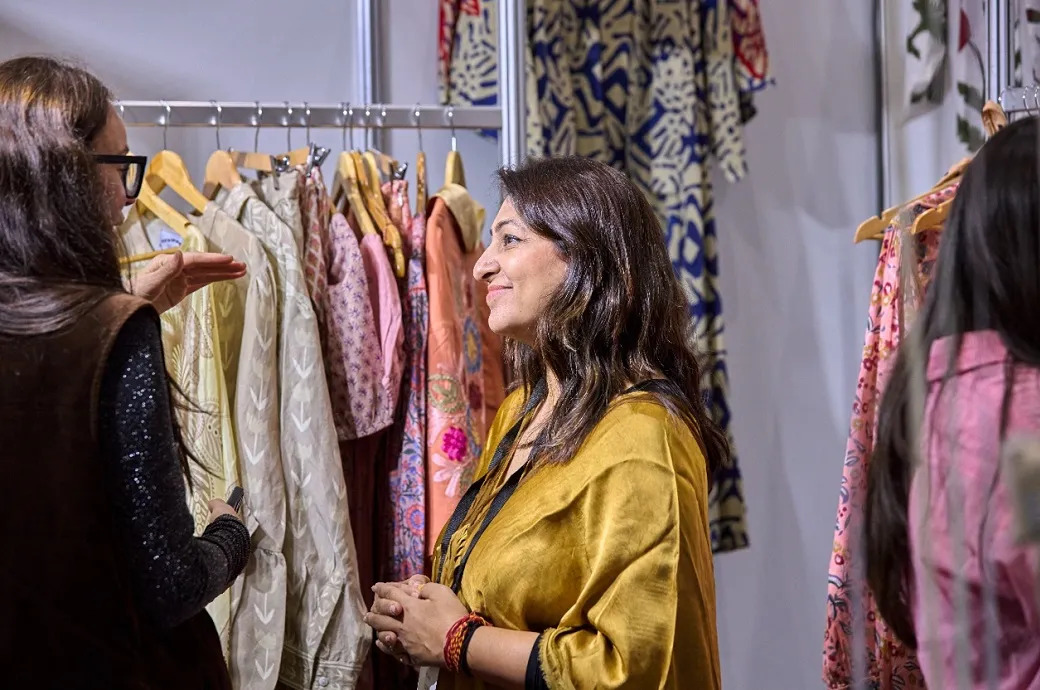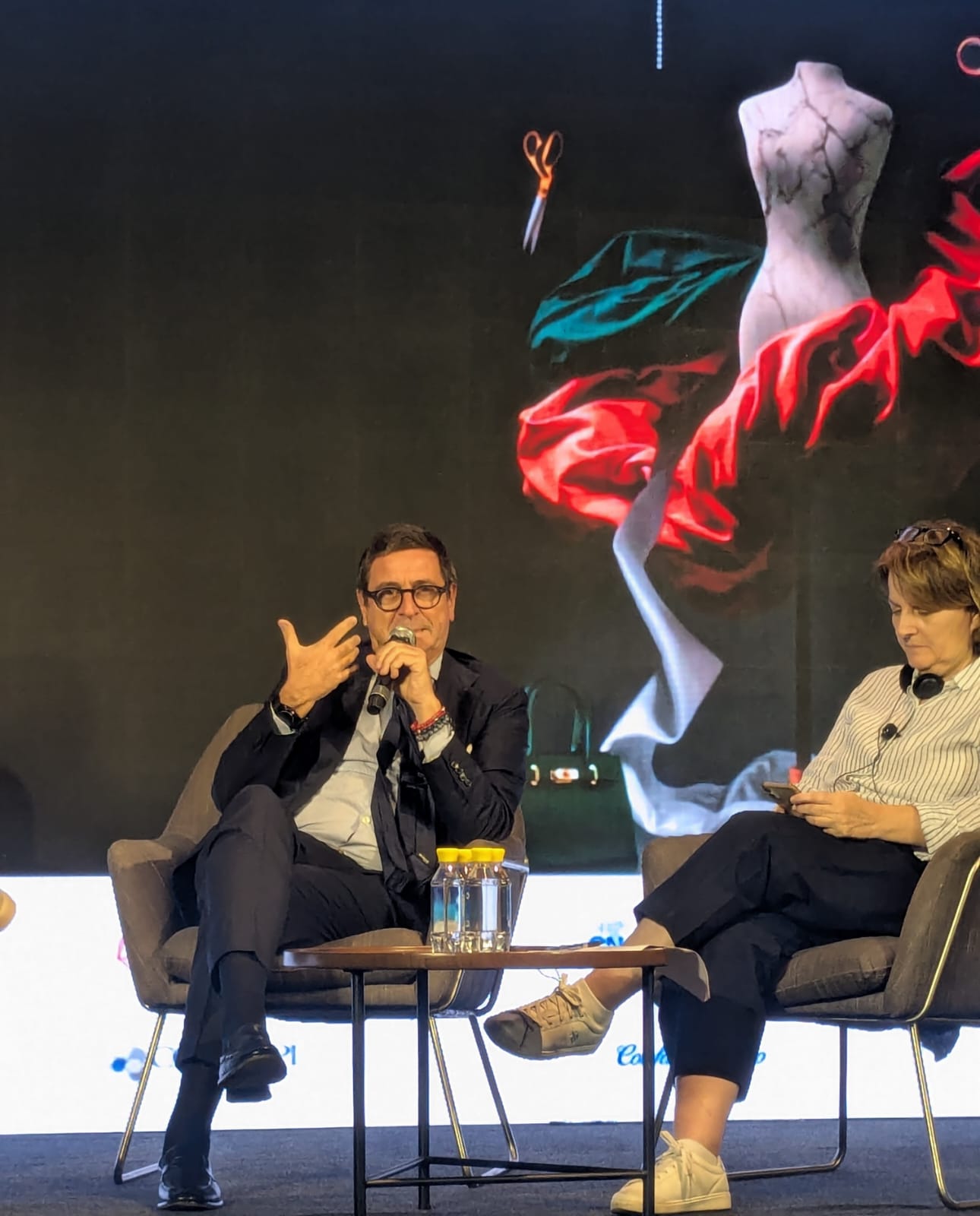FW
The global streetwear market is projected to grow from $193.88 billion in 2023 to $273.15 billion by 2033, with a compound annual growth rate (CAGR) of 3.49 per cent, as per a report by Spherical Insights & Consulting,
The sneakers segment is expected to hold the largest market share throughout the forecast period. This is largely because sneakers are closely tied to street culture, sports, and music, which heavily influence consumer trends and behavior. Owing to its rising popularity, the online segment is anticipated to grab the biggest market share.
Several factors are fueling the growth of the streetwear market. These including growing consumer base, higher disposable income with young consumers and the rise of social media and e-commerce which has accelerated trend cycles and allowed brands to reach consumers directly.
However, this growth is not without challenges. Rising production costs, especially for sustainable materials, are making it difficult for smaller businesses to remain profitable.
North America is expected to hold the largest share of the streetwear market. The region's appeal to companies is driven by consumers who are increasingly opting for stylish clothing, which is now widely used across various industries.
Meanwhile, the Asia-Pacific region is predicted to see the highest CAGR growth. India's streetwear market is a major contributor to this trend, fueled by its expanding middle class, rising living standards, and evolving fashion tastes. As a significant textile supplier, India's growing garment industry further supports the streetwear boom.
Global fashion brand, Urban Revivo is expanding its presence in London with the opening of a new flagship store at Westfield Stratford City. This move follows the successful launch of its Covent Garden store and is a major step in the brand's global expansion strategy.
The new store spans nearly 29,000 sq ft, making it one of UR's largest retail spaces worldwide. It joins the brand's network of over 400 stores globally.
The store's design reflects the brand's ‘urban revitalization’ philosophy with striking features like a 39-ft kinetic facade that uses LED technology and structural glass. Inside, industrial steel beams are integrated with terracotta bricks, creating a dynamic contrast. An iconic UR Prism installation transforms with the light, casting patterns that symbolize the brand's fusion of Eastern craftsmanship and Western futurism.
Leo Li, CEO, Urban Revivo, states,this opening is another major milestone in the brand’s development and it looks forward to a bright future here and across the region."
The new Westfield Stratford City store builds on UR's momentum in London, where its debut store is already a key part of the brand's strategy. The flagship is situated alongside some of the world's most well-known luxury brands, signaling UR's confidence in its ability to compete at the forefront of the fashion industry.
This latest expansion is a continuation of the brand's multi-flagship strategy, which has been successful in Asian hubs like Bangkok, Hong Kong, and Kuala Lumpur. By clustering premium locations, UR has been able to strengthen its brand authority and consumer reach.
With over 400 stores in Asia and a growing online presence in Europe and North America, Urban Revivo aims to be the world's most influential fashion brand. The company is committed to sustainable, high-quality designs and uses advanced supply chain management and technology to maintain high standards.
Revenues from India's home textile industry are likely to decline by 5–10 per cent this fiscal year. As per a report by Crisil Ratings, the decline is a result of the 50 per cent tariffs imposed by the United States on August 27. The US is a critical market for the industry, accounting for nearly three-quarters of its income.
Despite the significant tariff, the impact may be partially cushioned for some companies. A review of around 40 firms, which make up 40–45 per cent of the sector's revenue, suggests a few factors will soften the blow.
These include speeding of shipments to the US by many companies before the tariff deadline, limited spare capacity of rival countries like China, Pakistan and Turkey that prevents them from immediately taking over India's market share, exploration of new markets by India’s exporters.
According to Manish Gupta, Deputy Chief Rating Officer, Crisil Ratings, while US home textile imports were slow in the first quarter, shipments surged as buyers advanced orders ahead of the tariff increase. Gupta believes India is likely to maintain its competitive edge in the American market.
Companies that rely on the US for more than half their revenues are expected to be the most affected. In response, exporters are now turning to Europe and the UK, which together made up 13 per cent of India’s home textile exports last year. A new free trade agreement with the UK is expected to help, as it eliminates the 10–12 per cent duty that previously disadvantaged Indian exporters compared to rivals like Cambodia, Pakistan, and Bangladesh.
However, scaling up in these new markets will take time. Gautam Shahi, Director, Crisil Ratings, warns, the tariffs will likely cause operating profitability on US exports to decline sharply. Indian suppliers may have to absorb part of the tariff costs while also dealing with weaker demand. He also noted that a risk of oversupply could put pressure on margins both domestically and abroad.
Crisil predicts a 200–250 basis point drop in the industry's operating profitability this fiscal year. This will result in lower cash flow and worse credit metrics. The debt-to-EBITDA ratio is expected to worsen from 1.9 to 2.4–2.6, and the interest coverage ratio is projected to fall from 5.4 to about four times.
The Bihar Government plans to set up a new RMG factory in the Bela Industrial Area of Muzaffarpur.
The factory will be developed by Gogreen Apparel with an Rs. 23.36 crore. It's expected to produce 5.5 million garments annually.
According to Samrat Choudhary, Deputy Chief Minister, the new unit falls under the textile and leather sector, which the state government has designated as a top priority to create jobs, attract private investment, and strengthen the economy. This initiative is part of the broader push by the NDA government, led by Chief Minister Nitish Kumar, to expand employment opportunities.
The recently approved Industrial Policy 2025 has laid the groundwork for quicker growth, and this project brings the state closer to its economic and industrial goals. The new facility is expected to create jobs for local workers and provide fresh momentum to Muzaffarpur's economy as Bihar aims to become a leading center for textile production.
KCM Srinivasan, North District President Tiruppur and other officials congratulated KM Subramanian on been re-elected without opposition as the President of the Tiruppur Exporters’ Association (TEA).
During his visit, Subramanian had a detailed discussion on the challenges facing the industry, specifically the impact of recent US tariffs on textile exports. The officials assured Subramanian. they have raised the issue with their party's top leadership and are providing regular updates. They expressed optimism that a positive announcement to address the tariffs would be made soon.
On behalf of the exporter community, Subramanian thanked the Prime Minister and Finance Minister for the recent GST measures announced by the Central Government. He said these measures would significantly benefit the knitting and textile sector.
Under Subramanian's leadership, the Tiruppur Exporters’ Association continues to be a crucial voice for the industry. The organization promotes growth and works to ensure Tiruppur keeps its position as India’s top knitwear export hub.
Europe's system for managing textile waste is under severe pressure, says a new report by Boston Consulting Group (BCG). Titled, ‘Textile Waste at a Tipping Point: Unlocking Europe's Circular Potential,’ the report notes, the collection and sorting infrastructure - the core of the system - is at a breaking point, with several key players halting operations or declaring bankruptcy.
In France, the social enterprise Le Relais stopped all textile collection in mid-2025. As a protest against underfunding, it began dumping unsorted waste outside major retail stores, warning it would not survive the year without emergency aid.
Smaller collectors are also quietly shutting down. In Germany, two major collectors, SOEX and Texaid, filed for insolvency in October 2024 and June 2025, respectively. Their downfall is a result of a collapsing export market and rising sorting costs.
The United Kingdom is also experiencing a crisis, with closures and layoffs hitting textile recyclers, including Textile Recycling International, which went into administration in early 2024. The Textile Recycling Association has warned of a "sector-wide collapse" as processing capacity vanishes and resale prices plummet.
The core of this crisis is a funding gap: eco-organizations and public authorities aren't paying enough per ton to cover operational costs. This pressure is compounded by saturated second-hand markets, waste from fast fashion, and stricter export rules. The report cautions that without immediate action, Europe's goals for textile circularity are at risk of unraveling.
Currently, only about 1 per cent of Europe's textile waste is recycled into new textiles. The rest is either reused through second-hand markets, downcycled into lower-value products like rags, turned into solid recovered fuel (SRF), or sent to landfills or incinerators.
Landfilling is expected to drop sharply by 2035 - from 26 per cent of total textile waste in 2024 to 17 per cent in 2035. This is due to regulatory and environmental pressure, including the EU Landfill Directive, which mandates a reduction in municipal waste landfilling to below 10 per cent by 2035. Many countries are now implementing landfill taxes and bans on specific products.
Reuse remains the most sustainable option, supported by charities, resale platforms, and exports. However, this ecosystem is also under strain as the European second-hand textile market slows down. The rise of ultra-fast fashion and the saturation of traditional export channels are creating a surplus of low-quality, unsellable garments. This, combined with falling resale prices and rising collection costs, is squeezing the margins of operators. Incineration, while an alternative, is still carbon-intensive and could undermine climate objectives unless paired with mitigation measures.
Vietnam Textile and Apparel Association (VITAS) has raised its 2025 export target for textiles, garments, and yarn to a range of $47 billion to $48 billion. In the first eight months of 2025, Vietnam’s textile and garments exports increased by 8.5 per cent Y-o-Y.
Combined with a strong order flow, this has given VITAS confidence to raise its initial forecast.
Many Vietnamese textile and garment enterprises have already secured a substantial number of orders for the entire year, providing a stable foundation for production and export activities.
The industry has expanded its export reach to new markets, including Russia, the Commonwealth of Independent States (CIS), and countries in the ASEAN region, which helps mitigate risks from over-reliance on traditional markets like the US and EU.
Vietnam is leveraging its extensive network of new-generation FTAs, such as the EVFTA and CPTPP, to gain preferential tariffs and increase its competitiveness in major global markets.
Ongoing shifts in global trade dynamics have led many international buyers to diversify their sourcing away from other major textile producers, with Vietnam being a primary beneficiary of this trend.
Vietnamese companies are increasingly shifting from the traditional cut-make-trim (CMT) model to higher-value methods like FOB (free on board), ODM (original design manufacturing), and OBM (original brand manufacturing), which boosts the value of their exports.
The industry is actively investing in modern technology, digital transformation, and sustainable production practices to meet the increasingly strict environmental and quality requirements of major export markets.
Despite the optimistic outlook, the sector faces some challenges, including potential impacts from evolving trade policies and reliance on imported raw materials. However, VITAS believes, with strategic planning and continued government support, the industry is well-positioned to achieve its ambitious 2025 export goal.
Zegna Group reported a 53 per cent increase in net profit to €48 million in H1, FY25, despite a slight overall revenue decline. The company's revenues declined by 2 per cent to €928 million. This was largely due to the strong performance of its direct-to-consumer (DTC) channel, which saw 6 per cent organic growth.
The company's gross profit was €626 million, with a gross profit margin of 67.5 per cet. Adjusted operating profit (EBIT) was €69 million, reflecting a margin of 7.4 per cent.
The Zegna segment showed a particularly strong performance, with its operating profit improving by 150 basis points to 14.3 per cent. This strength helped offset the negative impact from strategic transformations at the Thom Browne and Tom Ford Fashion brands.
According to Ermenegildo ‘Gildo’ Zegna, Chairman and CEO, Zegna Group, these results prove the strength of their strategic focus on the DTC channel and improving operational efficiency across all three brands. He emphasized on the company's commitment to investing in long-term growth projects.
The CEO further noted, despite industry challenges and currency pressures, the company remains confident in achieving its 2027 goals, thanks to the strength of its supply chain, brand authenticity, and clear vision.
American fashion holding company that owns Coach, Kate Spade, and Stuart Weitzman, Tapestry, Inc has announced new long-term financial targets for FY27-28. The company projects mid-single-digit annual revenue growth, an operating margin of over 22 per cent by FY28, and a low double-digit earnings per share (EPS) growth over the period.
Tapestry expects to generate $4 billion in adjusted free cash flow between FY26 and FY28. The company has also reaffirmed its previously issued FY26 outlook, which remains unchanged.
Tapestry has set specific targets for its individual brands. The company expects Coach to achieve a three-year mid-single-digit revenue compound annual growth rate (CAGR) and expand its margins to the mid-30 per cent range. The brand has also set an ambitious goal to reach $10 billion in revenue.
The brand Kate Spade is forecast to return to profitable growth in FY27, with revenue growth accelerating to a mid-single-digit and a high single-digit margin in FY28.
In addition to its brand-specific goals, Tapestry plans to return $4 billion to shareholders by FY28, which represents 100 per cent of its adjusted free cash flow over the period. The company will maintain an annual dividend of $1.60 per share in FY26 and aims to repurchase approximately $3 billion in stock under a new buyback program.
Owner of brands like Old Navy, Banana Republic and Athleta, Gap Inc is foraying into the beauty industry.
The company will soon launch a pilot program this fall in 150 Old Navy stores, offering customers a curated selection of beauty and personal care products. Some of these stores will have dedicated beauty sections with trained staff.
Gap Inc. plans a full-scale launch in 2026, including expanding the beauty business at Old Navy and creating new product lines for its other brands.
This move follows Gap Inc's recent revitalization under the leadership of Richard Dickson, CEO who has improved the company's relevance and financial performance. The company is also expanding its accessories business after a strong customer response. For example, Old Navy recently released its first handbag line, designed by Zac Posen, Executive Vice President and Creative Director, Gap Inc.












